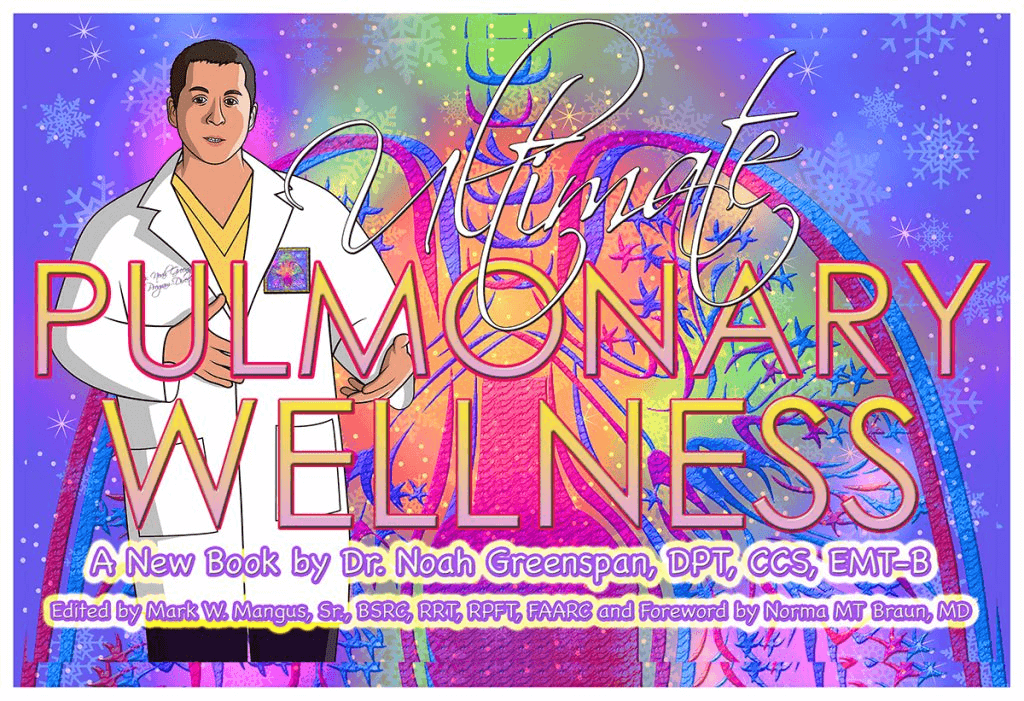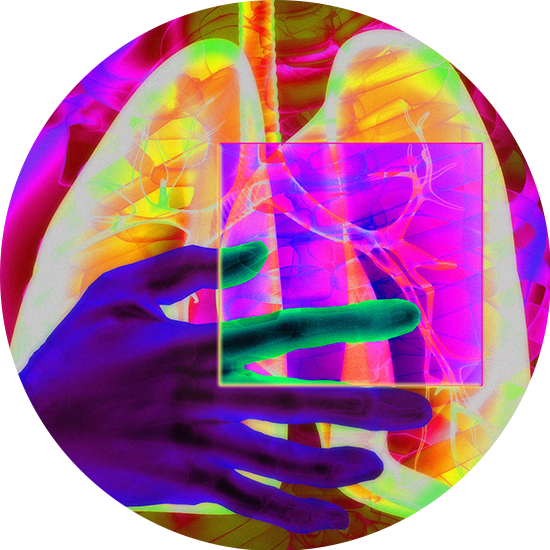
Emotional Health & Well-being
Grace McKeown, John LaJeunesse & Charlene Marshall
Pulmonary fibrosis elicits several emotional responses, because it threatens the very thing most people take for granted… our ability to breathe!
In this section, we explore various emotional responses that might occur following the diagnosis of pulmonary fibrosis. We hope that your emotional and mental health can be spared a little from the challenges we encountered following our own diagnoses, and that our experiences bring you some comfort. We aren’t supposed to know how to cope with a life-threatening diagnosis, and we acknowledge that there is no how-to guide to help us.
When given the diagnosis of an interstitial lung disease (ILD) such as PF, we have already lived in a world where we’ve experienced various stressors and strains that influence our ability to cope with adversity. We often come from vastly different life experiences by the time we become part of the ILD community, post-diagnosis. These experiences will inevitably influence our emotional responses to a diagnosis like PF, and these responses will vary widely.
Some important factors to take into consideration which might affect one’s emotional response to PF, is their diagnostic experience, age and like we mentioned already, previous life experiences. Regardless of whether your diagnosis of PF is abrupt or occurs following a prolonged period seeking answers; how you feel is both valid and understandable. Charlene Marshall is one of the authors of this book, and as an IPF patient who is privileged to interact with many other patients, including those who are newly diagnosed, she hears regularly how varied people’s responses are to their diagnosis. Charlene shares this about her own IPF diagnosis in 2016:
“Personally, I (Charlene) felt as though I was regurgitating someone else’s sad story; I didn’t know anything about IPF and couldn’t comprehend that my young and otherwise healthy body was dealing with a terminal illness. Initially, I believe my coping strategy was avoidance and I really didn’t think about what life would be like post-diagnosis.”
Charlene further shares that her mental health, prior to her diagnosis, was stable and that she had previously developed effective coping strategies. This helped her tremendously when the reality of having a life-threatening lung disease like IPF finally started to sink in. Charlene recognizes that not everyone has developed effective coping skills, which further complicates how some may respond to a diagnosis like PF, especially in addition to other stressors in a patient’s life.
Before diving into this chapter further, we want to re-introduce you to its authors.
John is the most recently diagnosed of all the authors, although there have been many stressful parts of his life that he is also coping with. He also has been a mentor to his brother who has an even more recent diagnosis of PF.
Charlene is the baby; she is the youngest of the group in both chronological age and at diagnosis. She is an active patient and advocate, and you may know her work with Pulmonary Fibrosis News. She was instrumental, alongside Noah Greenspan, in formulating this group.
Grace, that’s me; the “oldie” of the group being 80 years old and having PF the longest, as my diagnosis was in 2006. You may have gathered more about us from the first chapter, introducing us and the other contributors to this book.
Emotional scars can be traced back to a variety of stressors that have occurred in our lives. Let’s look at some commonalities of how people may respond to life-threatening news and consider some strategies to reduce the impact of stress on ourselves and our loved ones. Did you know that a diagnosis of a life-threatening illness can elicit responses likened to grief, even though a death hasn’t occurred?
When John was diagnosed with PF, his spouse felt as though she had been cheated somehow because the diagnosis was unsuspecting. When this happens, there is an-almost deafening silence amongst your loved ones. If they seem distant or impartial, it might be because they’ve already surrendered their heart to the loss of you. Since we all come with various life experiences, they may have already suffered losses which could be triggering, so please don’t turn your back on them.
One of the original grief response models by Elizabeth Kubler-Ross, has been adapted in recent years, but her work has undoubtedly shaped people’s understanding of how we respond to death, chronic illness, or life-threatening news. Her underlying message is that not everyone experiences each stage or corresponding emotional response in the same order, and the time spent in each is varied and non-linear, and how you feel today might drastically differ from tomorrow.
This has been my (Grace) experience, and my responses have repeated themselves at various stages of this disease. At first, it felt disappointing that I had not moved on, but now it feels more like a relief. “I have been here before” becomes an inner message that gives me strength.
For this chapter, we’ll use the Kubler-Ross model to outline the stages someone might experience in response to their diagnosis. Those stages are denial, anger, bargaining, depression, and acceptance. Since the original publication of Ross’ work, some modifications have been suggested, including shock, and we add them here where relevant.
As you may have previously experienced throughout your life, grief can consume you physically and emotionally. Grief in response to a chronic illness is a complex process, and we see it at various times when changes in the illness trajectory occur, such as progression of the disease. Before we get into the original stages of Ross’ model, we as patients, face the shock of a PF diagnosis.
SHOCK
It likely won’t come as a surprise to you that shock is one of the first emotional responses that many people experience. In addition to shock, many of us feel fear, dread, and panic. Our cough or shortness of breath has been a nuisance over the years and none of the usual remedies have helped. Eventually, after being pushed by family you visit a doctor, which results in a prescribed remedy. It’s a bit of a pain when the remedy doesn’t make any difference. Sometimes even the third or fourth prescription doesn’t even help and the cough returns. An x-ray seems like the next logical step, but it can be alarming to then have a series of investigations set in motion based on those x-ray results. These tests likely include bloodwork, pulmonary function tests, cardiac diagnostics, and a high-resolution CT scan. Although alarming, it can also feel reassuring because a solution will emerge, and all this investigation can only be useful in our quest for answers.
Even throughout the investigative process, patient’s experience a range of emotions and we haven’t even received a diagnosis yet. There is likely to be some anxiety, often unspoken, about what these symptoms could be, like cancer. When no cancer is found, it’s normal to feel relieved. Phew, now that you know it isn’t cancer, you feel like you can breathe again, metaphorically speaking of course! However, the emotional challenges come from the eventual diagnosis, and it’s perplexing that all these investigative tests result in a diagnosis that does not have a cure, or even remedies to help.
Unfortunately, that’s the reality of a progressive illness such as PF, and despite the physician’s efforts, it’s not easy to deliver this diagnosis to a patient or their family. In Charlene’s diagnostic experience, she remembers fixating on the following words: “life-threatening,” “progressive,” “lung failure,” and “oxygen.” She couldn’t focus on anything else, no matter how many ways the specialist tried to soften the diagnosis.
All suffice to say, a diagnosis of PF would be a shock to anyone, whether the process for you mirrored the scenario above or it was like the experience told by other authors of this book. How we respond to shock depends on previous experiences in our lives.
I (Grace), for example, was quite proud of the fact that I don’t have a panic button, so others expected that I would be able to cope with this and I did. I got on with my life and saw no reason not to continue with my plans to embrace permaculture. I planned to spend my time between England, where I could be part of my grandchildren’s life, and Spain, where I could contribute to community development initiatives and ecological protection of the environment. It was not in my plans to let PF get in the way of these desires! It may have been useful to accept that changes to my lung function would happen, and in hindsight, I question whether part of my coping could be explained in the grief model as denial.
DENIAL
In the early stages of grief, often felt when diagnosed with a chronic illness, it is counterproductive to deny the truth of the disease, but this is the reality of many patients’ response. Denial, however, is a natural response and can be the proverbial “breathing space” we might need to come to terms with our diagnosis. Denial forces us to delay some decisions that will have to be made and shields us from the sorrows and regrets that we are sensing but not yet ready to look at. This can be a particularly difficult time for caregivers, especially if they are feeling ready to face the disease head-on and the patient is in denial. See chapter 3 on caregiving for more information.
ANGER
Where denial as a short-term emotional response can give time for us to find a way to cope with some of the changes; anger can act as a mask for other emotions building inside patients newly diagnosed with PF. However, anger can be the stimulus that drives us to learn more about PF and how to cope with it. It was my (Grace) anger about the lack of information provided by my clinicians that drove my original research into the disease. I didn’t recognize this as anger at the time, simply because I do not view myself as an angry person.
Like all responses in Ross’ model, anger is not an emotion felt by everyone. It’s hard not to feel resentful or angry with others who have made poor health choices throughout the years, such as those who smoke but remain ‘fit and healthy’ and yet for us, walking a couple of feet is challenging. Anger can also force self-reflection and help us turn inward and explore what might have contributed to our diagnosis (though, it’s important not to blame yourself). Self-reflection allows us to think about things differently and examine: what can now be changed in our lives to help preserve our respiratory health?
When experiencing anger, it doesn’t feel possible that it’s potentially be a positive thing for us but be patient with yourself or your loved ones; there is a lot to be angry about and it’s important to process those things. For example, the way life was “supposed to go” is inevitably going to be different for patients, and as a caregiver, you may not have expected this role and resent it.
“Why?” is a question that has no answer and can make us so angry. Finding ways to disperse that anger by journaling, talking to a friend who will just let us be angry, expressing it out loud to oneself and finding a safe physical outlet are all useful strategies for dealing with anger. I (John) have managed to come to terms with my anger by deeply pondering the impact my diagnosis has had on my family. I try not to be as hard on myself anymore and now I lean on my family when I’m feeling low. I still have good and bad days but, I’m able to remember that just as I care about my longevity, so do my significant others. I try to be positive for myself but mostly for them.
BARGAINING
Just as we can’t bring a loved one back from the dead, we also can’t turn back the clock to our pre-ILD life. For people who are religious and believe in the power of prayer, it may feel beneficial to increase the time praying. As an example, bargaining can mean returning to church for some people and with that, an increase in support.
Wanting to bargain to influence the outcome of life with an ILD is not restricted to a religion. We may tell ourselves that there are always exceptions to a poor prognosis. For example, if good nutrition hasn’t been taken seriously up to the point of diagnosis, committing to a healthy lifestyle might become a bargain with the expectation of a different outcome. Further, building a support network through a social community for example, or embarking on a healthy eating journey will have a positive influence on our general well-being, which may be a bargain worth exploring simply for the benefits it will provide. If the goal of bargaining however is to eradicate our diagnosis of PF through healthier choices, which unfortunately won’t happen, the emotional response to bargaining can turn to deep sadness about the reality we are facing.
DEPRESSION
This time of deep sadness can be a real challenge for anyone who has not previously had experience with depression. It can feel as though depression takes over one’s life and is immobilizing. Depression can make decisions feel impossible and thinking foggy and disjointed. As a temporary stage when dealing with the roller coaster of emotions involved in a progressive illness, depression is very common and can even be beneficial as we face different stages of the illness.
I (Grace) did get very down recently, even after living with PF for years. My pulmonary consultant appeared to be writing me off from any further intervention and it was clear that a decision had been made that I was in the end stage of this illness. The problem was that it was not being talked about openly. I oscillated between fear of what appeared to be thought about me and disappointment that the work that I had put into building the relationship with my clinicians seemed of no value.
As a result, sadness made me stop once again, though I knew I had been here before. I also was feeling scared. Again, I felt the despair that PF was catching up with me and that I was approaching death. I felt exhausted, and my shortness of breath was the most debilitating it had been for years. Expressing how I felt to family and friends was what enabled me to move through this. I also shared how I felt via email to my consultant and made him aware of the negative response that can be felt by patients regarding poorly presented information.
ACCEPTANCE
This stage sounds almost idyllic and feels like it guarantees happiness, but that is not it’s intention. In some ways, acceptance is the starting point of living “life with PF;” accepting life with a lung disease as opposed to clinging to life before the diagnosis. For some, acceptance may be a stage that comes early in the journey, whereas for others, reaching this stage is very difficult. It means that we look toward a future despite all its unknowns.
Acceptance can also be a stage of change; the start of focusing on well-being and prioritizing our mental health, for example. Acceptance can move us to do incredible things, despite the adversities we are facing. Despite living with PF, all the authors of this book have accepted our disease, albeit begrudgingly as no one wants to have PF, and committed to taking our experience and writing about it to help others.
STRESS
Stress is how our bodies react to the demands we face in the world. The stress of losing one’s ability to breathe can make other stresses seem trivial by comparison, but it’s important to still recognize and acknowledge those stressors as having an impact on us. Stress can also lead to feeling anxious, concerned, despondent, depressed and a whole variety of what-are-considered to be negative emotional responses. Navigating emotions connected to a life-threatening lung disease is unknown terrain for all of us.
Feeling anxious is a common response to stress and something most of us are aware of, however stress is not all bad. The fancy name for stress that elicits positive responses is eustress; it can be a motivator and even contribute to a “feel good” sensation when we let it. Remembering that point; when we let it; is very important and reminds us of what we do have in our control, especially when we don’t feel in control.
I (Grace) can find it stressful to motivate myself to get out for my walk, for example. I live in a southwest city in the UK, and it means a car ride to the open countryside. I often feel exhausted just preparing an adequate supply of oxygen to take with me, dressing for the weather and getting into the car. On good days, these tasks seem simple, but on bad days it can feel like trying to climb a cliff face without a rope. I talk to myself during this time and remind myself of some positives or that I have felt this way before but came through this stress before.
The positive feeling I get from an outing is not only the satisfaction that I had walked, but physically I feel better too. This is the dopamine response in my brain that’s been stimulated I realize from some of my research and for me, just feeling better is good enough. In fact, this ‘feel good factor’ can then set off a chain of positive events
There is often anxiety around the “what ifs” as well. When stress elicits negative emotional responses, including anxiety and depression, the effects can be felt to varying degrees. For example, stress, anxiety, or depression may show up in physical, mental, or behavioral forms so it is useful to address them when symptoms appear.
In the chapter on oxygen, Linda has outlined the use of a pulse oximeter to check oxygen saturation. Simply seeing that our oxygen levels are ok is comforting when we are short of breath (SOB), even though we know that SOB does not always correlate to an oxygen drop. Seeing our oxygen saturation helps us realize that anxiety might be playing a part in our SOB. The fear or general anxiety that other organs in our bodies are deteriorating is very understandable. When emotional tension and stress come are present, our bodies can manifest a variety of changes identified as physical, emotional, or behavioral.
PHYSICAL
Differentiating whether physical manifestations are caused by illness progression or exacerbation, infection or brought on as a response to emotional stress is very hard for ILD patients, their caregivers, and clinicians to determine. Therefore good, open dialogue is so essential in all discussions. It’s easy for patients to get the impression that they are expected to be strong and find ways to cope while they might be feeling as if they are paddling just to stay afloat. Here is a non-exhaustive list of the many physical symptoms we experience when we are stressed:
- Low energy or fatigue
- Headaches
- Bruxing or jaw clenching
- Muscle cramps or tension chest pain
- Racing heartbeat
- Palpitations
- Generally shaky or nervous
- Cold hands and feet
- Gastric upsets
- Light-headedness or dizziness
- Upturned sleep pattern
- Frequent colds or infections
- Low sex drive or interest
Feeling in control is one of the most powerful things we can do for ourselves. As we get more and more anxious and SOB gets worse, the important thing is to feel that we are gaining control of what is happening. Just starting with breath control is worthwhile. Chapter 5 deals with this in greater detail but a brief description of breathing control here is still useful. Following are some tips on how to do that:
SLOWING THE BREATHING RATE
Start by slowing the rate of the breath; first breathing in for a count of 2 then out for 2, maintaining this for a few moments. Then continue in for 2 and out for 4 or whatever ratio you have found works for you. Combining this with pursed lip breathing is particularly useful when symptoms are increasing, and a sense of unease is developing fast.
PURSED LIP BREATHING
This is a type of breathing where we breathe in through the nose and exhale through the mouth gently. A visual could be smelling the roses and a very gentle blowing out through the mouth as if you are cooling soup. This can elicit more relaxed and easy breathing. With the relaxation that comes from feeling more in control of one’s breath, other physical symptoms, such as racing pulse and palpitations are lessened. Go ahead – try it! It’s important to reflect on how our emotions may be influencing our physical symptoms.
BEHAVIORAL
Sometimes we don’t notice behavioral changes within ourselves, so it’s worthwhile paying attention if someone else comments that our behavior is different from baseline. This can happen to any of us; patient, friend or caregiver and is so important to address, although it’s not easy.
Below are some of the behavioral change’s others might see that are brought on by stress. Remember that we are all different with different ways of behaving.
- Isolating socially
- Starting or refusing to consider stopping unhealthy habits.
- Putting off decisions of importance
- Developing nervous tics like pacing, nail biting
- Falling asleep in daytime but having difficulty at night
- Having outbursts of anger or irrational thoughts/comments
COGNITIVE
Observing cognitive change brought on by stress is where we might start to get concerned about the emotional and mental well-being of ourselves or loved ones. When the signs below, often the result of negative self-talk and low self-esteem, are constant, it’s time to act and seek professional support.
- Seeing only the negative in a situation.
- Unwanted thought or internal dialogue.
- Brain fog lacks concentration.
- Less discernment in judging or deciding.
- Acting anxious and finding it difficult to explain feelings or behavior.
All these behaviors throughout the grief stage of coming to terms with our diagnosis are perfectly understandable and normal. However, when they become more sustained, like a cloud enveloping us and our lives fall out of balance, that is when we need to pay more attention. Replacing negative self-talk with being more positive is a way forward. Like using the recovery breathing method to reduce the dreadful sensation of being SOB, try positive inner talk to get you through difficult times.
EMOTIONAL
Following are some of the more common emotional symptoms we might experience that are caused by anxiety, stress, and depression:
- Anxious thoughts, feelings, or behaviors
- Tense, mind turmoil causing difficulty sleeping.
- Depression or deep sadness
- Overwhelmed or feeling that thing are out of control
- Agitation, anger, irritability, or hostility
- Isolation from others and becoming lonely
- Less capable or low self esteem
Functions like breathing, heart rate and blood pressure are not usually what we spend much time thinking about until they stop operating automatically, which is controlled by the nervous system. Regulation of these functions come from a part of the nervous system called the autonomic nervous system which has three parts:
- The sympathetic system
- The parasympathetic system
- The enteric system
These work together by preparing us to face stressful situations, then return to a more relaxed state when it’s over. This function is often described as the fight or flight response in a stressful scenario, but let’s not forget that it also has day to day uses such as sweating to cool us down when the weather gets warm.
In fight or flight mode, the sympathetic system stimulates the release of adrenaline into the bloodstream. This increases our preparedness for action; our hearts might race; mouth feels dry and breathing becomes more intense. If we maintain that level of constant alert and having the body work overtime, we can cause serious health problems. In opposition, when the alert is over the parasympathetic will reduce our responses and allow the body to move into a rest and digest stage. Finding strategies to help us move out of the fight or flight stage is empowering and can bring calm and purpose to our lives.
The manifestations we have outlined can, if they become a regular occurrence, be a sign of a chronic stress situation. It can muddy the waters in situations where it mimics or exacerbates symptoms that come from having PF.
Now that we’re aware of different stress responses and how they impact us physically, mentally, and emotionally, let’s focus on countering the stress response.
EDUCATING OURSELVES
Learning more about this illness has been my (Grace) lifesaver. I admit that curiosity is a trait I have lived most of my life, but I also know that it has reduced my fear of the unknown, or worse, my fear of the dreaded. I learned that life with the prognosis of PF could be influenced by lifestyle, like all aspects of well-being. I could not change the course of my illness, but I could influence the kind of life I would lead while living with it.
Educating ourselves can build the confidence that allows us to be our best advocate. It can help create a positive state of emotional well-being that reduces fear and many of the physical symptoms caused by stress, fear, or anxiety. We feel a sense of control by knowing more, as they say: knowledge is power!
REACH OUT!
There is a lot of evidence that our emotional well-being is significantly improved by social contact and support. Previously, we have emphasized the importance of building a clinical team. Emotionally, we feel supported when our team is in regular communication, and we feel more like a person vs. a number to them.
SUPPORT GROUPS
Dealing with challenging emotions such as anxiety and depression is increasingly difficult alone. Talking with friends and family can be very useful and can be a feel-good factor for us. Feeling heard and supported from fellow patients and those who truly understand our experience, is just one of the benefits a support group provides.
There are various online support groups, among them the Pulmonary Wellness Foundation, that have platforms with excellent sources of information for patients and caregivers. Much of the information is from patients who understand what it feels like to be a person with an ILD and who are at various stages of their illness. On many support sites, funny anecdotes provide laughter, which they say is the best medicine.
LAUGHTER
It’s a fact that laughter can lower stress levels, decrease anxiety, and reduce depression. It can relieve both physical and emotional tension in our bodies by reducing the level of stress hormones in the blood and stimulating the release of endorphins, relieving pain, and promoting healthy immune function.
Generating laughter comes in many forms; may be from watching cartoons, phoning a funny friend, or even turning that smile in the mirror into a grin which can become a laugh. It really doesn’t matter what form it takes but it’s worth fitting in ways to laugh throughout the day for the amazing benefits it brings to our mental health and well-being.
EATING WELL AND BEING NUTRITIONALLY WELL
While fighting a chronic illness, it’s important to give our bodies as much good nutrition as possible by eating well, which is why we have devoted a chapter to nutrition in this book. Being emotionally healthy and committed to good nutrition influences what we eat, but what about the other way around? Large quantities of simple carbohydrates, sugars and refined foods are connected to negative emotions. This is not to say that a Belgian chocolate eclair is banned forever but keep it balanced.
Alcohol is a central nervous system depressant and while it may be enjoyable in the moment, it does have longer term negative consequences to our physical and emotional health. Additionally, caffeine drinks like tea, sodas and coffee can give a temporary stimulus and can also increase the negative feelings that are common in depression, anxiety, and stress.
PHYSICAL CONTACT
Physical contact or touch can be hard when you live on your own or have lost a partner, however, there are therapies like massage whose benefits go beyond the blissful relaxation that is so beneficial. Massage therapy can improve emotional health by increasing serotonin, a hormone that reduces depression and pain by enhancing the immune function. This also builds resistance to bacterial and viral illnesses.
PHYSICAL THERAPIES
There are a variety of physical therapies that can aid in relaxation. Massage is one of them, which may help us in unsuspecting ways. As my (Grace) PF has progressed, there has been a reduction in my ribcage depth. This has caused my posture to shift to a more forward head position, which causes the rib cage and lungs to be under even more physical pressure. When I have a massage, the muscles at the front of the ribcage relax and the back one’s tone so I stand straighter. Emotionally, it feels better to be upright, facing the world, rather than curled up and feeling cowed. It also seems to expand my breathing ability no matter what the function tests show.
ROUTINE
Routine and consistency are an important aspect of mental health and well-being. This is especially true for those living with a chronic illness. It can be one less thing for us to think about and plan; allowing us to conserve both mental and physical energy. How we start our day can “set the scene” for good mental health. Personally, my (Grace) routine has changed from time to time while learning to cope with this illness.
Big changes, like developing pericarditis and atrial fibrillation, left me feeling despondent that I was deconditioned. That is where having the routine of Bootcamp, which is described in the exercise chapter, was crucial in emotionally helping me get back on my feet and re-establishing my daily routine. Linda also reminds us that establishing a routine may be as simple as identifying and committing to the completion of one small task. Or it could be a full day mapped out with precision.
Presently, I only concentrate on a few things. It includes a short gratitude meditation when I wake up, a smile in the mirror (after all who else is going to give me a smile today) and a qigong exercise to aid my breathing and develop energy. With these completed, the endorphins are kicking in and the day is already made better with this routine.
RELAXATION TECHNIQUES
There are a range of movement theories such as tai chi, yoga and qi gong that are associated with improved well-being and relaxation. The fluid movements that are part of these, together with breath control and mental focus, combine to produce a sense of calm. More restful bodily responses are achieved, and we feel more rested and less stressed. The mind-body connection is strong; one influences the other and finding a balance here reduces our pain and anxiety. Classes in these movement theories can be found in most communities and online. Participating in a class is a great way to obtain these benefits at any stage of your disease. Following are a few suggestions of how movements based on qigong can help, especially on those bad days when SOB is causing anxiety.
We sought the help of Brian Trzaskos, PT, LMT, CSCS, CMP, MI-C the creator of the Qigong for Pulmonary Health and founder and director of the Institute for Rehabilitative Qigong and Tai Chi ( www.IROTC.com) who produced the following piece on universe tapping for breath anxiety. It is specifically for patients who are experiencing bad days; you know the ones when it all just seems like it’s too much.
UNIVERSE TAPPING FOR BREATH ANXIETY by Brian Trzaskos
One of the most common issues associated with shortness of breath is that of anxiety. This makes perfect sense and is completely normal for anyone, with or without a pulmonary health condition, as fear of suffocation is one of only three primary fears that we are born with. Fortunately, there is a simple and effective tool for minimizing the anxiety that is associated with shortness of breath.
Like Qigong, Universe (aka Primordial) Tapping is a practice thousands of years old originating as a part of Traditional Chinese Medicine (TCM). TCM identifies 2,400 acupuncture points which act as “gateways” to energy channels or meridians in the body. TCM theory holds that when the body becomes chronically tense that energy or “qi” gets stuck in the meridians and is unable to circulate freely. Freely circulating “qi” is associated with good health and stuck or depleted “qi” is associated with disease. Tapping on certain acupuncture points has been shown to increase “qi” circulation, resulting in lower body tension, deeper breathing, decreased pain, less anxiety, and overall relaxation.
Going a bit deeper than the body responses to meridian tapping alone, TCM also teaches that our emotions have an energetic component as well. Emotions like fear, anger, grief, and anxiety can also become trapped in the body when “qi” is unable to circulate. To address this, Universe Tapping additionally includes a process of learning to accept what is happening in the moment while simultaneously releasing trapped emotions through positive affirmations.
Here are the steps to lowering your anxiety and breathing easier in just a few minutes:
Step 1: Using one or both hands, begin lightly tapping the following points for approximately 10-30 seconds each: the top of your head, over your eyebrows, the side of your eyes, under your eyes, under your nose, center of your chin, collarbones, under your arms, and sternum
Go through all the points, allow yourself to relax as you focus solely on the sensation of your fingers tapping the points. Very often this alone will help a person’s breathing deepen; if so, just go with the flow and take some deeper breaths.
Step 2: Come up with a statement that includes both your primary concern and a positive vision of support from the Universe. Some examples would be:
- Even though I feel short of breath, I know calming myself will help me get through this episode.”
- “Even though I feel short of breath, I have the tools to help myself.”
- “Even though I feel short of breath, I release this anxiety to the Universe”.
Feel free to modify your statement as you tap to allow it to feel supportive and relaxing. The secret to success is first to accept what is happening, followed by a statement of faith that despite how it may appear the Universe is loving and supportive. If you are a religious person, feel free to substitute your own loving God in the place of the Universe
Step 3: Continue lightly tapping the points and begin repeating your statement quietly internally or with a whisper. Cycle through tapping each point for 10-30 seconds while repeating your statement until you feel more settled and relaxed, allowing yourself to take a few deeper breaths.
These techniques are ways of harvesting energy, and we know how low that can be on occasions with PF. Brian’s recommendation are to help reduce the emotional trauma that we encounter when we are dealing with SOB.
MEDITATION AND MINDFULNESS
Practicing meditation and mindfulness is widely known to be beneficial to counter negative emotions. There are countless apps and tools available to assist us with meditation. However, it can still feel daunting for some people, so it’s worth remembering that any meditation practice allows us to slow down; reducing any physical or emotional responses that cause us problems. The very act of stopping and concentrating on a moment that is now can be an experience akin to meditation. As Rene says, “I have not formally practiced the art of meditation. Sharing a glass of wine while watching an amazing sunset and reminiscing over the wonderful places we have visited has a similar sensation for me”.
Even with all these strategies in place, it’s important to listen to ourselves if we are overwhelmed in a way that feels there is no way out. This may be the time when therapeutic counselling could be helpful. One aspect of the emotional turmoil that patients with a diagnosis of a chronic illness experience, could be compared to post traumatic stress disorder (PTSD). With PTSD symptoms, they are not a result of one single traumatic event, but one that is an ongoing threat to a person’s sense of safety.
According to the National Centre for PTSD, this disorder can produce higher inflammatory levels in the body and subsequent behaviors such as having difficulty in adhering to medical treatment, avoiding, or messing up medications, or a patient’s inability to follow up with appointments might occur. In an ideal world, it would be good if these behaviors raised alarm bells to clinicians that patients could be experiencing PTSD but that may not happen in a busy clinical environment. The extreme anxiety some of us feel at the time when diagnosis is given can be felt again on subsequent visits to the hospital. As a result, patients can find it difficult to assimilate information, leading to further potential for misunderstanding and lowered compliance.
When patients are experiencing PTSD, avoidance may seem like the only way out of a situation that is so deeply painful. This is a good reason to be seeking professional counselling. The intention behind counselling in this scenario is to help develop coping skills. A counselor or therapist can enable you to see the steppingstones to help deal with anxiety and depression which can deplete energy and prevent us from moving forward.
HOPE
Psychiatrist Victor Frankl wrote about his experiences with emotional health in 1959. More specifically, he talks about emotional health being influenced by the attitudes we choose, the decisions we make, and the desire to look forward rather than backwards. In the pursuit of optimal emotional well-being as we live with an ILD diagnosis, it’s important to think about hope. While hope ebbs and flows throughout the course of our illness, it can be found in that space between despair and delusion.
In the negative state of despair, it feels like there is no way forward and the future holds no hope for improvement or happiness. Delusion, on the other hand, can deny that there is no cure and placing faith in spurious activities. Hope reduces feelings of helplessness, increases happiness, reduces stress, and improves quality of life. It helps develop coping skills even though there is often confusion between hoping and coping.
In coping, we rely on processes or skills that help us deal with a particular situation, such as the use of controlled breathing for SOB. Good coping skills such as journaling, visualization, and meditation, can help us sustain hope; adjusting our approach when necessary, and allowing us to live our best lives.
If we consider that despite a diagnosis of PF, we can survive and cope with adversities, then we can heal and become accepting. This healing may not happen immediately, and it may not be physical, since a cure does not currently exist for PF. However, we are now in a better place to cope with the symptoms of PF and having a life-threatening lung disease. We can thrive when how we cope elicits hope for a life of positivity and emotional wellness.
Reference: https://www.ptsd.va.gov/publications/rq_docs/V29N4.pdf
Order Your Book Now!

Purchase Your Signed Copy Today!
- Within the United States: $27.50 including Postage and Handling!
- Outside of the US: $52.00 including Postage and Handling! (Sorry. We know that is more than the cost of the book but we cannot ship for less.)
Subscribe To Our Newsletter For Upcoming Offers
- Be the first to know about new webinars, exclusive offers, and podcasts.
























